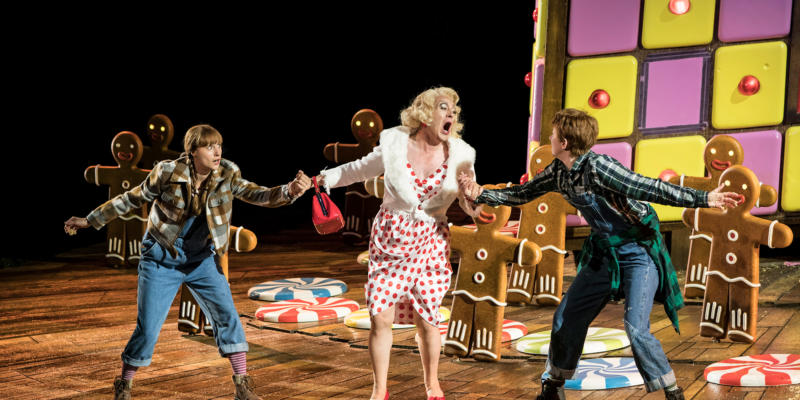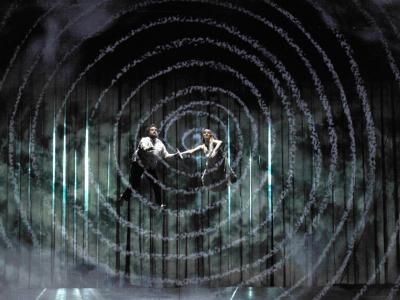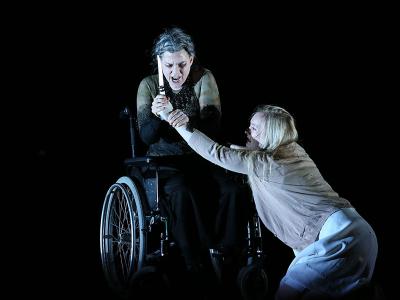Alchemic Arias: Magic in Opera
From witches to fairies, many composers through the years have brought their stories to live with a touch of magic. Here’s some of our favourite magical opera characters that would give Harry Potter a run for his money.
The Queen of the Night – Mozart's The Magic Flute
Video
One of the most iconic magical women in the Operatic canon, The Queen of the Night from Wolfgang Amadeus Mozart‘s Singspiel The Magic Flute, gets a suitably famous (and fiendishly difficult) aria.
She is the charismatic villain of the story, always seeking to destroy the high priest Sarastro and his high ideals. Her aria, peppered with rare high Fs, is an order to her daughter to kill the priest or be disowned.
The Queen’s magic takes the form of magical items distributed by her attendants, and she is widely feared by the other characters throughout her schemes to overrun and occupy the priest’s temple.
Her reign of terror is brought to an end by the rising sun, but her captivating presence has proven impossible for opera audiences to forget since the role was first sung in 1791.
The Fairies – Benjamin Britten's A Midsummer Night’s Dream
Video
Britten’s adaptation of Shakespeare’s famous romp is permeated by magic. Fairy Kings and Queens rub shoulders with mortals, one unfortunate is partially transformed into a donkey, and magic flowers sow chaos across everyone’s love life.
In Robert’s Carson’s production for ENO, the stage saw flying beds, waking dreams and magical escapades played out on a landscape made of bedding.
Oberon tricks Titania into falling in love with an ass-headed man. Bedlam is created among the love lives of the mortals. Puck manages to restore order (largely by correcting his own mistakes), and the opera ends with a wedding and a play.
Interestingly, the opera’s libretto stays largely true to Shakespeare’s original magical script.
Britten managed to complete the opera in a year, despite having to wrangle together 14 different characters across the three groups – the fairies, the royals and the rustics.
Isolde – Richard Wagner's Tristan and Isolde
Video
Isolde is one powerful leading lady.
In the opening moments of Wagner’s Tristan and Isolde, she casts a spell on the ship she is sailing in, in the hopes that the sea and death will rise up and to devour all on board.
Luckily someone talks her out of it, and we later learn that she has remarkable healing powers, which she used to save Tristan’s life before learning his true identity and falling irrevocably in love with him.
The magic potions she has inherited from her mother – tinctures of both love and death – play an important role in their unfolding story, which unfortunately does not end well for anyone.
Like a lot of Wagner’s operas or ‘music dramas’ as he referred to them, this one clocks in at almost five hours of thwarted lovers, magic and heartache. When the lovers are finally united in death Isolde sings the moving Liebestod (literally “love death”) before joining Tristan in eternity.
Alcina – Handel’s Alcina

Handel’s opera seria (serious opera) Alcina is named for the enchantress whose island provides the setting of the story.
Using her magical powers she has created a beautiful home that she can lure men to – before transforming them into wild beasts, of course. But Alcina’s conniving ways will have consequences, as the abandoned fiancé of her most recent catch comes to the island, intent on retrieving her enchanted man.
Enthroned in splendour and adored by men, Alcina makes for one of the most impressive magical women in opera, even if it is all an illusion.
Unfortunately it can’t last forever, and when our heroes smash the urn that is the source of her powers, Alcina is left bereft and friendless. At least it was fun while it lasted.
The Witch – Engelbert Humperdinck's Hansel and Gretel

Rounding off our list we have Hansel and Gretel. When Engelbert Humperdinck (no, not that one) wrote this opera he changed some details of the story to make it more kid-friendly. Even so, it’s pretty dark stuff.
The witch traps the children using a magic wand, as well as old-fashioned non-magical rope.
Luckily, Gretel is able to get her hands on this magic wand, and it’s this that helps the children to shove the witch into her own oven, before she can eat them herself! They even use the witch’s magic to free lots of other children from her clutches.
Luckily by the end they’ve escaped the forest and left all the scary magic behind.
We spoke to Open Air Theatre director Timothy Sheader about the ENO production, want too find out more about Humperdinck’s fanciful opera?


